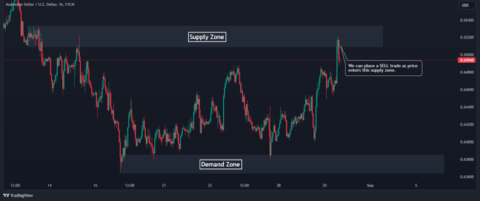Photo by PiggyBank on Unsplash
Day trading is a fast-paced and often complex endeavor that requires a well-thought-out strategy to navigate successfully. One effective approach is to use multiple technical indicators in conjunction to enhance trading accuracy and reduce false signals. By combining different types of indicators, traders can gain a more comprehensive understanding of market conditions and make more informed trading decisions. This article will guide you through the process of creating a multi-indicator strategy for day trading success.
Understanding the Importance of Multiple Indicators
Technical indicators are mathematical calculations based on the price, volume, or open interest of a security. They help traders predict future price movements and identify potential trading opportunities. However, relying on a single indicator can often lead to misleading signals. Combining indicators from different categories—such as trend-following, momentum, and volatility—provides a more holistic view of the market and helps confirm signals, increasing the likelihood of successful trades.
Selecting the Right Indicators
Choosing the right combination of indicators is crucial for building an effective trading strategy. Here are three types of indicators and examples of each:
- Trend-Following Indicators: These indicators help identify the direction of the market trend.
- Moving Averages: Simple Moving Average (SMA) and Exponential Moving Average (EMA) are popular choices. They smooth out price data to help spot trends over different time frames.
- Momentum Indicators: These indicators measure the speed and strength of a price movement.
- Relative Strength Index (RSI): This oscillator ranges from 0 to 100 and helps identify overbought or oversold conditions.
- Moving Average Convergence Divergence (MACD): This indicator shows the relationship between two moving averages and helps identify momentum shifts.
- Volatility Indicators: These indicators measure the rate of price change and market volatility.
- Bollinger Bands: These bands are plotted two standard deviations away from a moving average, indicating potential breakout or breakdown points.
- Average True Range (ATR): This indicator measures market volatility by calculating the average range between the high and low prices over a specific period.

Creating a Multi-Indicator Strategy
To create a multi-indicator strategy, follow these steps:
- Define Your Trading Goals: Determine what you want to achieve with your day trading strategy. Are you looking for quick, small gains, or do you prefer holding positions longer for larger profits? Your goals will influence the choice and combination of indicators.
- Combine Indicators for Confirmation: Use indicators from different categories to confirm trading signals. For example, you might use a moving average to identify the trend direction, RSI to gauge momentum, and Bollinger Bands to measure volatility. This combination helps ensure that a potential trade is supported by multiple signals, reducing the risk of false entries.
- Set Up Your Indicators: Configure your chosen indicators on your trading platform. Ensure that the settings align with your trading goals and time frame. For instance, you might use a 50-period SMA to identify the trend, a 14-period RSI for momentum, and 20-period Bollinger Bands for volatility.
- Establish Entry and Exit Rules: Clearly define the conditions under which you will enter and exit trades. For example:
- Entry Rule: Enter a long position when the price is above the 50-period SMA, RSI is above 30 (indicating upward momentum), and the price touches the lower Bollinger Band (suggesting a potential bounce).
- Exit Rule: Exit the position when the price crosses below the 50-period SMA or RSI drops below 70 (indicating weakening momentum).
- Implement Risk Management: Incorporate risk management rules to protect your capital. Set stop-loss orders to limit potential losses and use position sizing to ensure no single trade can significantly impact your account. A common rule is to risk no more than 1-2% of your trading capital on any single trade.
Testing and Refining Your Strategy
Once you have developed your multi-indicator strategy, it’s essential to test it thoroughly before implementing it with real money. Follow these steps:
- Backtesting: Use historical data to test your strategy and see how it would have performed in the past. This helps identify any weaknesses and allows you to make necessary adjustments.
- Paper Trading: Practice your strategy in a simulated trading environment without risking real money. This helps build confidence and ensures you understand how the strategy works in real-time market conditions.
- Continuous Evaluation: Monitor your strategy’s performance and make adjustments as needed. Market conditions change, and what works today might not work tomorrow. Keep a trading journal to record your trades, analyze your successes and failures, and refine your strategy accordingly.
Tips for Success with Multi-Indicator Strategies
- Avoid Overcomplicating: While using multiple indicators can enhance your strategy, too many can lead to confusion and analysis paralysis. Stick to a few key indicators that complement each other and provide clear signals.
- Stay Informed: Keep up with market news and developments that might impact your trades. Technical indicators are valuable, but they don’t account for unexpected news events or market sentiment shifts.
- Maintain Discipline: Stick to your trading plan and avoid emotional decision-making. Consistency is key to long-term success in day trading.
- Keep Learning: The financial markets are constantly evolving, and successful traders adapt to these changes. Continue educating yourself through books, courses, and trading communities to stay ahead of the curve.
Conclusion
Combining multiple indicators can significantly enhance your day trading strategy by providing a more comprehensive view of market conditions and confirming trading signals. By carefully selecting and integrating trend-following, momentum, and volatility indicators, you can create a robust strategy that increases your chances of success. Remember to test your strategy thoroughly, implement risk management practices, and continuously refine your approach to stay profitable in the dynamic world of day trading.

Daniel J. Morgan is the founder of Invidiata Magazine, a premier publication showcasing luxury living, arts, and culture. With a passion for excellence, Daniel has established the magazine as a beacon of sophistication and refinement, captivating discerning audiences worldwide.





